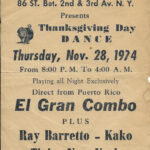In Oscar Wilde’s play “Salomé,” the act of dancing becomes a pivotal moment, a transaction where Salomé leverages her performance to bargain for her deepest desire: the head of Jokanaan. The stage direction describing this crucial scene is strikingly minimal: “Salomé dances the dance of the seven veils.” This brevity, especially when contrasted with Wilde’s typically elaborate and prose-like stage directions, is what initially captures attention. She dances solely for King Herod, a performance crafted for his gaze and pleasure. What is particularly noteworthy is the absence of descriptive detail surrounding this dance. We are left to imagine Salomé’s movements, her expressions, the atmosphere of seduction or perhaps nervousness. Wilde deliberately withholds these details, prompting us to question: why this conspicuous silence around the dance of the seven veils?
The very phrase “seven veils” is laden with intrigue. Scholarly discussions have explored how Wilde’s writing often hints at his homosexuality through the motif of looking and being seen, or rather, being hidden. Like a secret concealed behind a “veil,” Salomé’s dance can be interpreted as a gradual unveiling of her true nature. Through the layers she sheds in this dance of the seven veils, she ultimately reveals her desires. It is only after this performance, when she articulates her gruesome wish to possess Jokanaan’s head, that Herod is no longer filled with lascivious pleasure. Instead, he is horrified, finally comprehending the depth and darkness of her unveiled nature. The choice of “the dance of the seven veils” is particularly fascinating, as Wilde’s play marks its first recorded usage. Is it possible to interpret this phrase through the lens of Wilde’s own experiences with hidden identity and the act of revelation, or are we perhaps reading too much into this symbolic dance? Could the dance of the seven veils be a metaphor for something more profound within Wilde’s work and personal context?

